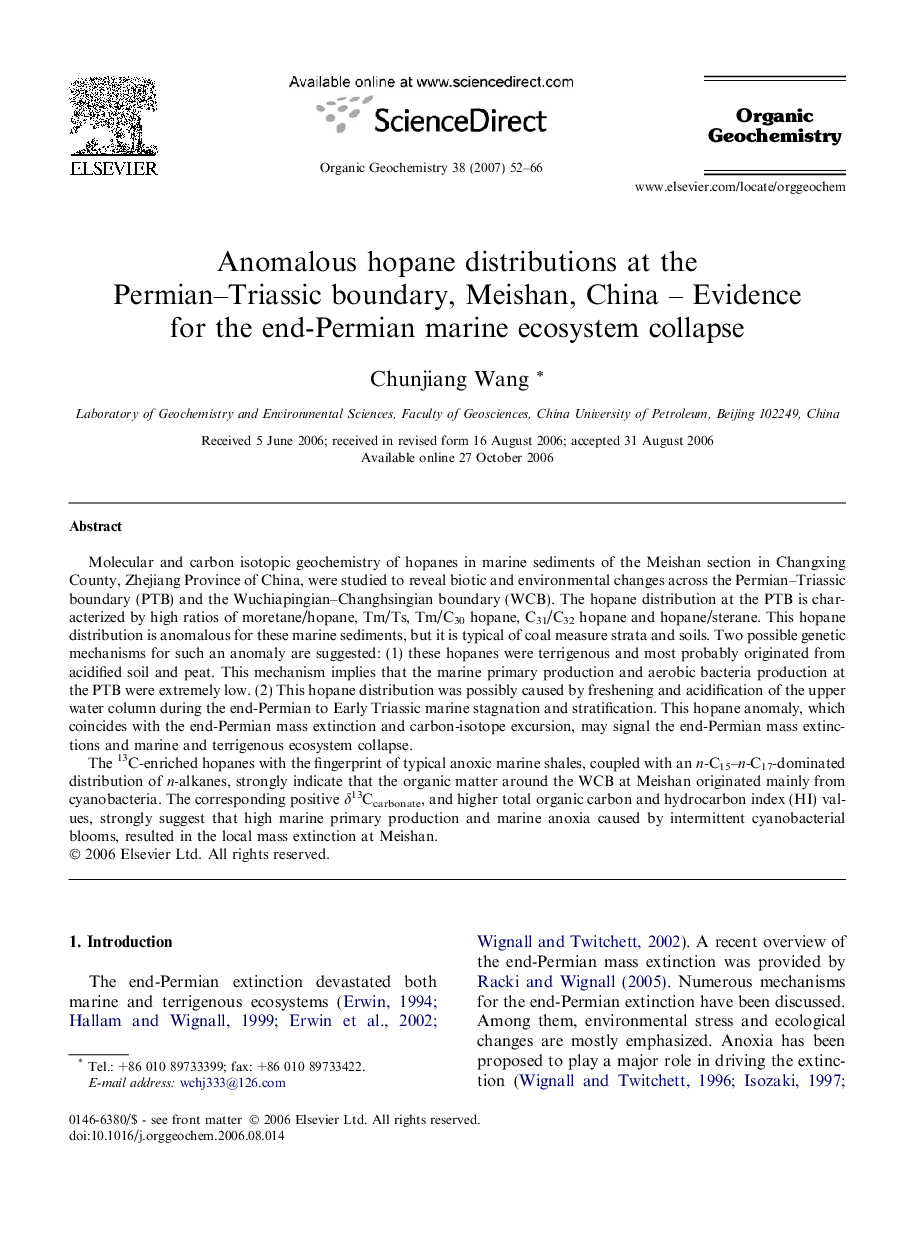| Article ID | Journal | Published Year | Pages | File Type |
|---|---|---|---|---|
| 5162115 | Organic Geochemistry | 2007 | 15 Pages |
Abstract
The 13C-enriched hopanes with the fingerprint of typical anoxic marine shales, coupled with an n-C15-n-C17-dominated distribution of n-alkanes, strongly indicate that the organic matter around the WCB at Meishan originated mainly from cyanobacteria. The corresponding positive δ13Ccarbonate, and higher total organic carbon and hydrocarbon index (HI) values, strongly suggest that high marine primary production and marine anoxia caused by intermittent cyanobacterial blooms, resulted in the local mass extinction at Meishan.
Related Topics
Physical Sciences and Engineering
Chemistry
Organic Chemistry
Authors
Chunjiang Wang,
